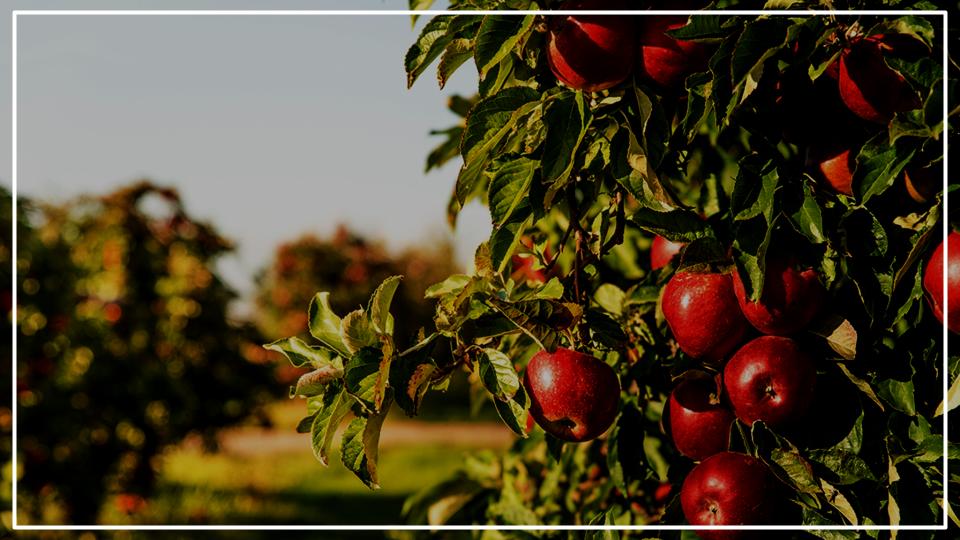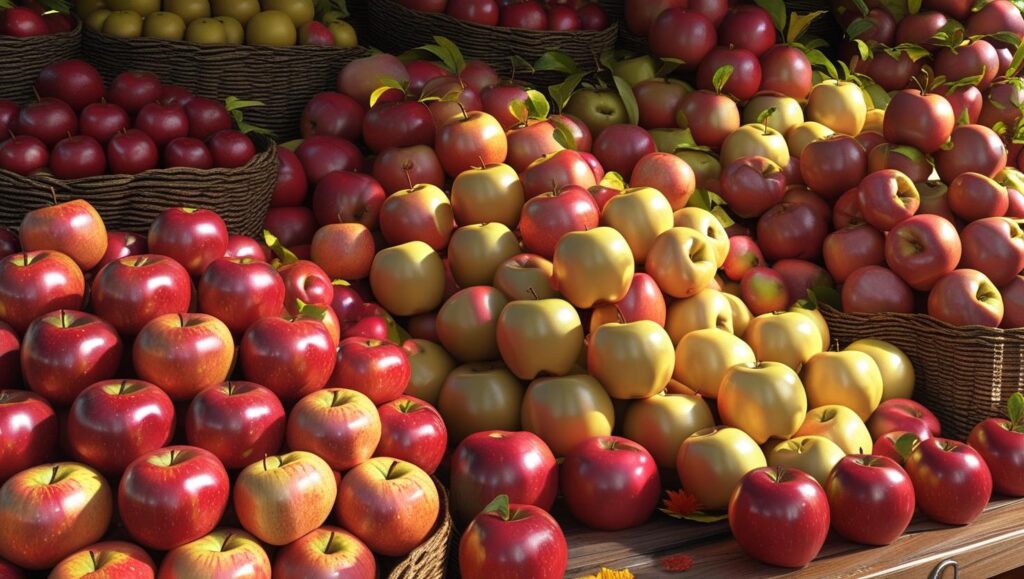The apple is more than just a fruit; it’s a symbol of home, a staple of lunchboxes, and the star of our most beloved desserts. From the satisfying crunch of a freshly picked Honeycrisp to the comforting aroma of a bubbling pie, apples are woven into the fabric of our lives. But have you ever wondered where most of the world’s apples come from? The answer might surprise you and reveal a story of incredible scale. This article will not only unveil the country that produces the most apples but will also guide you on how to bring the magic of the apple harvest right into your own backyard.

In the Orchard: Key Insights
Here’s the core of the matter for every apple enthusiast:
- The Undisputed Champion: China is, by a staggering margin, the world’s largest apple producer, growing nearly half of the global supply.
- Global Contenders: After China, countries like Turkey, the United States, Poland, and India are major players in the international apple market.
- Backyard Feasibility: Growing apples at home is easier than you think. Success hinges on selecting the right variety and providing plenty of direct sunlight.
- Pollination is Key: Most apple trees require a different variety nearby for cross-pollination to produce fruit. Always plant at least two compatible trees.
- Variety is Everything: From the tartness of a Granny Smith perfect for baking to the sweet snap of a Gala, there’s an apple variety to suit every taste and purpose.
The Unquestionable Leader: Which Country Produces the Most Apples?
When we think of apples, images of classic American orchards might dance in our heads. While the United States is a significant producer, one country dominates the global stage in a truly remarkable way: China.
It’s difficult to overstate China’s role in the world’s apple supply. According to the latest data from the Food and Agriculture Organization of the United Nations (FAOSTAT), China produces around 47 million metric tons of apples annually. To put that into perspective, that’s approximately 50% of the entire world’s production—more than the next ten countries combined. This massive output is the result of vast areas dedicated to cultivation, particularly in provinces like Shandong and Shaanxi, and a long history of apple growing that has evolved into a highly efficient modern industry.
The beloved Fuji apple, though originally developed in Japan, is now one of the most widely grown varieties in China, prized for its exceptional sweetness and crisp texture that holds up well in storage.

A Global Orchard: Beyond the Leader
While China holds the top spot, the love of apples is a global affair, with several other countries making significant contributions to the world’s apple harvest.
- Turkey: Consistently ranking as the second-largest producer, Turkey has a climate well-suited for apple cultivation, with varieties like the local Amasya being highly popular.
- The United States: Coming in third, the U.S. industry is centered in states like Washington, New York, and Michigan. According to the U.S. Apple Association, Washington State alone grows over 60% of the country’s supply. This is where many of our modern favorites, like the famously crisp Honeycrisp developed at the University of Minnesota, were born.
- Poland: As the powerhouse of the European Union, Poland is a critical supplier for the continent, known for both fresh eating apples and those perfect for processing into juice and cider.
- India: With orchards set against the stunning backdrop of the Himalayas, India’s production is centered in regions like Himachal Pradesh and Jammu & Kashmir.
This global spread ensures a year-round supply and a rich diversity of flavors for us to enjoy.
Bringing the Orchard Home: A Guide to Growing Apples
Seeing the global scale of apple production is inspiring, but the real joy comes from picking a sun-warmed apple from your very own tree. For me, the experience of growing apples at home is one of the great pleasures of gardening. It connects us to the seasons and rewards us with unparalleled flavor.
Choosing Your Perfect Tree
Success begins with the right tree. I always recommend that home gardeners purchase a 1-year-old tree, often called a whip, from a reputable nursery. Look for a healthy plant with a strong root system. Most importantly, consider the rootstock. An apple tree’s ultimate size is determined by its rootstock.
- Dwarf Rootstocks: These trees grow to about 8-10 feet tall, making them ideal for smaller yards and easy to manage for pruning and harvesting.
- Semi-Dwarf Rootstocks: Reaching 12-15 feet, these offer a more substantial harvest without becoming unmanageably large.
- Standard Trees: These can grow over 25 feet tall and are best suited for those with plenty of space.
A common mistake I see is gardeners buying a single tree. Remember, most apple varieties are not self-fertile. You’ll need to plant at least two different varieties that bloom at the same time to ensure proper cross-pollination and a fruitful harvest.
The Right Place and The Right Start
As a UGA Cooperative Extension guide on home apples wisely notes, sunlight is the most critical ingredient for success. Find a spot in your garden that receives at least six to eight hours of direct sun per day. Morning sun is particularly beneficial as it helps dry dew from the leaves, reducing the risk of fungal diseases.
Apples prefer well-drained soil with a slightly acidic to neutral pH of about 6.5. When planting, dig a hole twice as wide as the root ball but no deeper. You want the graft union—the noticeable bump on the lower trunk where the variety was joined to the rootstock—to remain at least two inches above the soil line. Backfill with the native soil, water thoroughly, and apply a layer of mulch to retain moisture and suppress weeds.
Star Players: Popular Apple Varieties for Your Garden
The world of apples is wonderfully diverse. Choosing a variety is a matter of taste, but also of purpose. Do you dream of baking pies, pressing cider, or just eating fruit straight from the branch? Here are a few of my go-to choices:
- Honeycrisp: The name says it all. Explosively crisp and perfectly sweet-tart, it’s a phenomenal fresh-eating apple.
- Granny Smith: My absolute favorite for baking. Its firm texture and pronounced tartness hold up beautifully in pies, crisps, and tarts.
- Gala: A reliable and sweet choice that’s perfect for families. These are often one of the first apples of the season to ripen.
- Fuji: Exceptionally sweet and juicy, it’s a fantastic keeper, meaning you can enjoy the taste of your harvest for months.
- Liberty: If you’re looking for an easier-to-grow option, I often recommend Liberty. It was developed to be highly resistant to common apple diseases, making it a great choice for organic gardeners.
Your Apple Planting Toolkit:
- A Healthy Apple Tree: Choose a 1-year-old whip with a good root system.
- Spade or Shovel: For digging a proper hole.
- Compost: To enrich the soil at the planting site.
- Mulch: Hardwood chips or straw work well.
- Garden Hose or Watering Can: For that crucial initial watering.
- Tree Guard (Optional): To protect the young trunk from rabbits or deer.
The Sweet Reward of the Harvest
From the vast, commercial orchards that feed the world to a single, treasured tree in a suburban backyard, the apple connects us all. Understanding the global journey of this humble fruit only deepens the appreciation for its presence in our lives. There is a profound satisfaction in nurturing a tree from a mere whip into a fruit-bearing member of your garden—a satisfaction that culminates in the simple, perfect crunch of an apple you grew yourself.
So whether you simply pick up a bag at your local market or decide to plant a tree of your own, you’re taking part in a tradition that spans continents and centuries. You are now ready to look at the apple in your fruit bowl with a new sense of wonder.
Read More
8 Plants That Will Ruin Your Lemon Tree’s Health—Avoid This Costly Error
